
15311826613
Click to add WeChatFeldspar ore is a general term for aluminum silicate minerals rich in alkali metals or alkaline earth metals such as potassium, sodium, and calcium. It is widely used in the glass industry, ceramic industry, chemical industry, abrasives, electronics and other fields. According to the different properties of feldspar ore, the beneficiation methods are different, but the basic process of each method follows the parts of crushing, grading, sorting and dehydration. This article will introduce the feldspar ore dressing process.
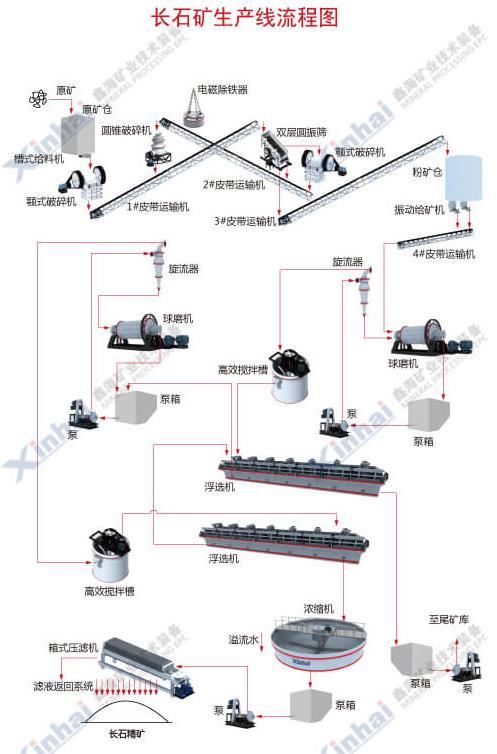
In the beneficiation and crushing link of feldspar, a two-stage crushing process is usually adopted, and the required equipment is a crusher and a screening machine. Among them, the jaw crusher is used for rough selection. Based on the relative movement of the moving jaw and the static jaw, the equipment squeezes and splits the ore, quickly crushes the large feldspar ore, and reduces the burden for subsequent fine crushing; the fine crushing adopts the hammer crusher, which mainly relies on the high-speed rotating hammer head to impact the ore to crush it; the vibrating screen or high-frequency fine screen screens the crushed products, separates the products with qualified particle size, enters the next link, and the coarse particles return to the crusher for further crushing.
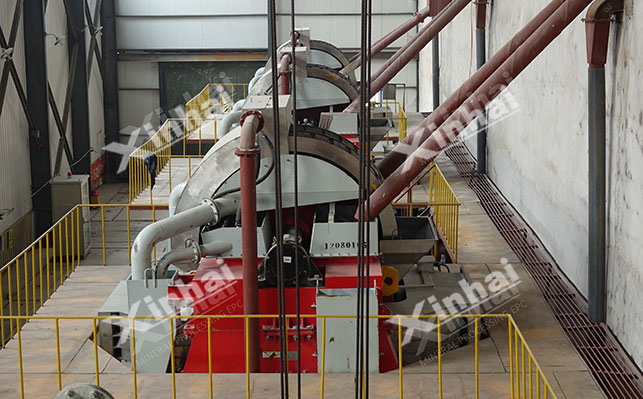
After two-stage crushing, the final crushed product particle size can be controlled at 0-15mm. This particle size range provides suitable feed for the subsequent grinding process, which not only avoids the low grinding efficiency due to excessive particle size, but also prevents the over-crushing phenomenon caused by too small particle size, which affects the subsequent mineral processing effect.
However, for weathered granite-type ores, because they are often mixed with a large amount of mud, if you want to obtain an ideal mineral processing effect, water washing and mud removal treatment is carried out after crushing. Through water flushing, fine impurities such as clay on the surface and in the gaps of the ore can be effectively removed to improve the quality of the ore. For slope-type deposits, it is also necessary to add a washing screen, which can further screen out larger impurities and assist in water washing and mud removal to ensure that the ore entering the subsequent process is clean and pure, reducing wear on equipment and interference with mineral processing indicators.
Feldspar ore grinding usually adopts a two-stage closed-circuit grinding process, and the required equipment includes a wet rod mill or a grid ball mill. Among them, the wet rod mill uses the linear contact method of the steel rod to grind the ore; the ball mill uses the parabolic contact method of the steel ball to grind the mineral. In this process, the classifier will be used to complete the operation. Usually, if the first stage of grinding does not meet the particle size requirements, it needs to be classified by a classifier or a cyclone equipment, and the qualified particle size is sent to the second stage of grinding, while the unqualified particle size is returned to the first stage of grinding for re-grinding.
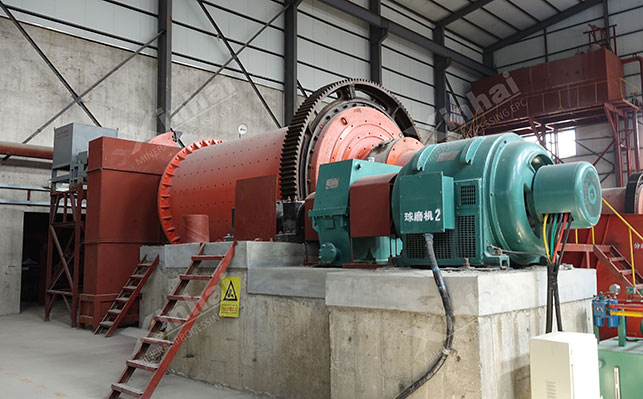
In this process, the control of ore particle size mainly varies according to the type of ore:
Weathered granite type: The grinding fineness needs to be controlled at -0.074mm, accounting for more than 85%, mainly because the feldspar minerals in the weathered granite type ore are finely embedded. Only when this fineness is reached can the feldspar and other minerals be fully dissociated, which is convenient for subsequent magnetic separation and flotation operations to effectively separate the target minerals.
Pegmatite type high-quality ore: The grinding fineness needs to be controlled at -0.074mm, accounting for about 60%-70%, mainly because the feldspar minerals in the pegmatite type ore have a good degree of crystallization and relatively coarse particles. This fineness can effectively dissociate and reduce over-crushing.
This classification process is mainly for feldspar ore with a large mud content. For desludging treatment, a spiral classifier or a hydrocyclone is usually used to desludify the milled slurry. The spiral classifier separates mineral particles with different settling speeds by rotating spiral blades. Fine mud is discharged with the water flow, and coarse particles are transported to a high place by spiral blades for discharge. The hydrocyclone uses the centrifugal force field to make the slurry rotate at high speed in the cyclone. Fine minerals are thrown to the wall of the device under the action of centrifugal force and discharged from the overflow port with the water flow, and coarse particles are discharged from the bottom flow port, realizing the efficient separation of fine mud and coarse minerals.
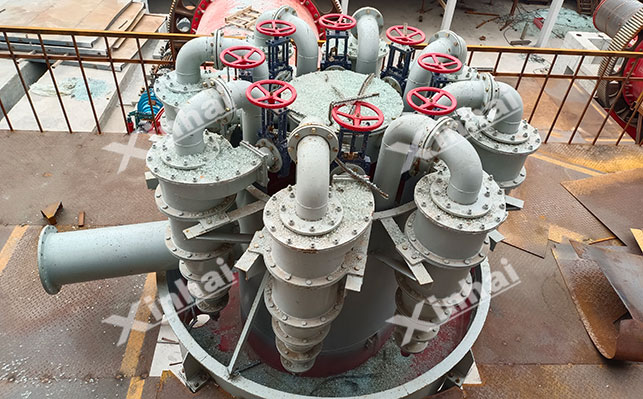
If the mineral contains clay minerals such as chlorite, it is necessary to add a scrubbing and desludging process. Scrub in a slurry with a concentration of 50%. Through the action of mechanical stirring and scrubbing equipment, clay minerals are separated from the surface of feldspar particles, and then removed by classification equipment, effectively reducing the impact of clay minerals on the quality of feldspar concentrate.
The feldspar ore selection and purification stage mainly uses physical and chemical means to select and purify the ground ore, select feldspar concentrate, and discard other waste rocks. Common methods include magnetic separation, flotation and gravity separation.
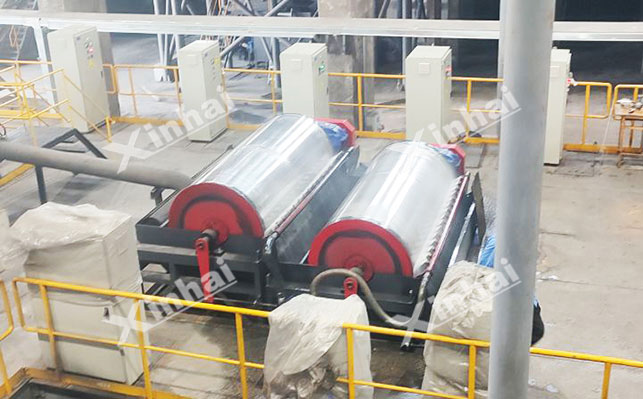
Strong magnetic minerals: For strong magnetic minerals such as magnetite and mechanical iron, a dry permanent magnetic drum magnetic separator is used, and the primary magnetic field strength is set at 0.8-1.2T. Under the action of the magnetic field, the strong magnetic minerals are adsorbed on the surface of the cylinder, and are taken to the magnetic field-free area as the cylinder rotates and then fall off to achieve separation from non-magnetic minerals.
Weak magnetic minerals: For weak magnetic minerals such as hematite and biotite, a high gradient magnetic separator is used, and the magnetic field is set to 1.6-2.0T. By setting a high gradient magnetic medium in the magnetic field, the capture ability of weak magnetic minerals is enhanced, so that the weak magnetic minerals are adsorbed on the magnetic medium under the joint action of the strong magnetic field and the high gradient magnetic medium, thereby being separated from other minerals.
Depending on the different occurrence states of feldspar and different minerals, the required flotation methods are also different. Commonly used methods include alkaline flotation, acidic flotation and neutral flotation.
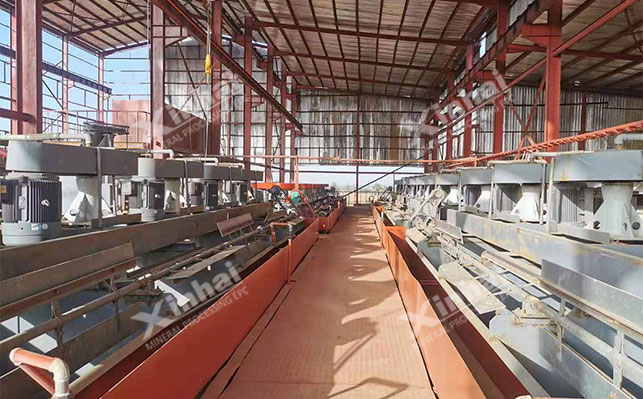
Acid flotation method: During the acid flotation method, the pH of the ore pulp is adjusted to 2.5-3.5, and hydrofluoric acid is used to activate the surface of feldspar. Fluoride ions in hydrofluoric acid react with metal ions on the surface of feldspar, changing its chemical composition and properties, making amine collectors firmly adsorbed, and the surface of feldspar becomes hydrophobic, while impurity minerals such as quartz are relatively hydrophilic. After stirring and aerating the flotation machine, feldspar particles float up with bubbles attached to form a foam layer on the surface of the ore pulp. After scraping, a feldspar-containing foam product is obtained, which is separated from minerals such as quartz.
Alkaline flotation method: The pH value of the ore pulp is adjusted to 10-11 by adding sodium carbonate. In an alkaline environment, sulfonate molecules chemically adsorb with the active sites on the surface of quartz, making the quartz surface hydrophobic. Under this condition, the surface properties of feldspar are relatively stable. During the operation of the flotation machine, hydrophobic quartz particles float up attached to bubbles, while feldspar remains in the ore pulp, achieving effective separation of the two.
Neutral flotation method: flotation is carried out under the condition that the pH value of the pulp is close to neutral (pH value 6-8). This process uses a specific chelating agent or amphoteric collector to form a stable complex with the metal ions in the feldspar, selectively changing the surface properties of the feldspar to make it hydrophobic. Then with the help of other auxiliary agents, the charge distribution and wettability of the mineral surface are controlled, and the minerals are effectively separated by the flotation machine.
Feldspar ore gravity separation is divided into three types: chute gravity separation, shaking table gravity separation and jigging gravity separation.

Chute gravity separation: It allows mineral particles to be layered according to density differences. Feldspar with low density will move upward along the spiral line of the trough wall; while high-density impurity minerals with a density greater than 3.5g/cm³, such as rutile and garnet, move downward along the spiral line near the bottom of the trough, thereby achieving preliminary separation. This method is suitable for the roughing (0.02-2mm) stage.
Shaking table gravity separation: using the inclined shaking table surface to make reciprocating asymmetric motion, the minerals with different particle sizes in the slurry are gradually separated. The density of coarse-grained feldspar minerals is relatively small, the sedimentation speed is slow, and they gradually move to the tailings end, while the high-density impurities settle quickly and move to the concentrate end, thereby achieving separation.
Jigging gravity separation: using vertical alternating water flow to stratify the mineral particle groups according to density differences in the pulsating water flow. Under the action of the rising water flow, the mineral particles are loosely suspended, the feldspar with low density rises quickly, and the impurities settle quickly and flow away with the water flow, achieving separation.

The feldspar dehydration process usually uses a classifier or a thickener for primary dehydration to make the bottom flow concentration reach 60-65%. Then the moisture content is further reduced by a filter press, and the product moisture content is ≤3% after drying. Among them, the spiral classifier discharges part of the water through sedimentation to increase the concentration of the pulp; the thickener uses gravity sedimentation to make the solid particles gather at the bottom, and the supernatant overflows from the top to achieve dehydration; the filter press applies pressure to the pulp to squeeze the water out of the filter cloth to form a filter cake with a low moisture content; the drying removes the residual water in the filter cake through heating equipment to ensure that the product meets the storage and transportation requirements.
The above is a detailed introduction to the feldspar ore beneficiation process. In the actual beneficiation plant, each feldspar ore has different properties, different outputs and different beneficiation methods. How to determine the specific process requires beneficiation tests. Designing a suitable process plan based on the actual situation is the key to obtaining high-quality feldspar concentrate.